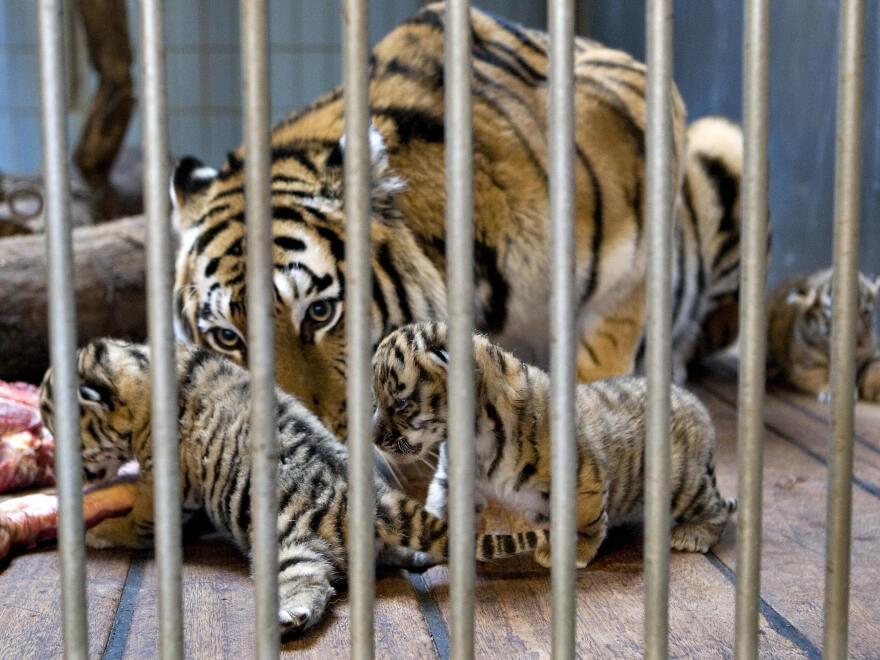After a social media post requesting surplus dogs to be donated to feed imprisoned animals went viral, a European zoo sparked interest and controversy.
The Aalborg Zoo in Denmark requested donations of unwanted pets to be “gently euthanized” and fed to captive predators in a Facebook post.
“Chickens, rabbits and guinea pigs form an important part of the diet of our predators especially the European lynx, which needs whole prey that resembles what it would naturally hunt in the wild,” the zoo noted.
“In zoos we have a responsibility to imitate the natural food chain of the animals – in terms of both animal welfare and professional integrity,” the message added. “That way, nothing goes to waste – and we ensure natural behavior, nutrition and well-being of our predators.”
Horses are also welcome at the zoo as part of its fodder program.
The Facebook post swiftly turned into a conflict between those who praised the zoo for its strategy of keeping a viable food source for its animals and those who were horrified at the idea of killing healthy dogs for animal feed.
The zoo’s choice of the term “pets” to describe the animals seemed to be the main source of the outrage, as it evoked the idea of beloved lapdogs being thrown alive into a real lion’s den.
“This is a joke right,” a furious commenter said. “No one would bring his healthy pet to a zoo so they can kill it and feed it to their animals.”
“In Denmark, this practice is common”
According to the Aalborg Zoo, cats and dogs are not allowed in the program. According to the organization, it has been limiting the animals that can be donated to guinea pigs, horses, chickens, and rabbits for years.
“To give them as natural a diet as possible, it is necessary to provide them with meat, preferably with fur, bones, etc., when keeping carnivores,” zoo deputy director Pia Nielsen told NPR in a statement.
Therefore, allowing animals who must be put down for a variety of reasons to be useful in this way makes sense. This is standard procedure in Denmark, and many of our partners and visitors value the chance to participate,” Nielsen continued.
What experts say
According to experts, in order to preserve the kind of eating patterns that caged animals would display in the wild, it is crucial that they be fed entire animal parts, such as fur, bones, and organs.
In the United States, commercially available meat products, such as chunk or mincemeat, are frequently added to the meals of captive carnivores.
Craig Packer, founder and director of the University of Minnesota’s Lion Center, told NPR via email that “the problem with just feeding lions meat is that the offal (liver, heart, etc.) is much richer in various nutrients than muscle meat — wild lions only start eating the muscle tissue after they’ve finished the offal.” “So feeding lions anything besides horse and cow meat would probably be a welcome change.”
In the US, conservation initiatives are accredited by the Association of Zoos and Aquariums (AZA). It stated that zoos that are members of the organization never use nor support the practice of requesting pets for food.
However, as part of a balanced diet, the AZA’s Nutritional Advisory Group emphasizes how crucial it is that predatory animals continue to have access to huge, entire animal remains.
In a statement, the advisory groups noted, “Zoos in the United States have long employed the practice of feeding vertebrate animal carcasses to captive carnivores as a management tool.”
“It encompasses a wide variety of prey types/form of presentation, from whole body to portion controlled, and has the beneficial effects of stimulating activity and improving normal feeding behavior,” it stated.
It has already been noted that zoo methods in the United States and Europe diverge, especially in the instance of Denmark.
The nation’s Odense Zoo made news across the world in 2015 when it decided to kill and publicly dissect a 9-month-old female lion in front of schoolchildren. This was part of a decades-old process the zoo had been using to manage its lion population.
Animal rights advocates were appalled to discover that a healthy two-year-old giraffe named Marius had been put down and his remains fed to the lions at the zoo a year earlier in the capital city of Copenhagen. Marius had to be put down, according to the Copenhagen Zoo, in order to prevent inbreeding among its giraffes.
Copyright 2025 NPR






